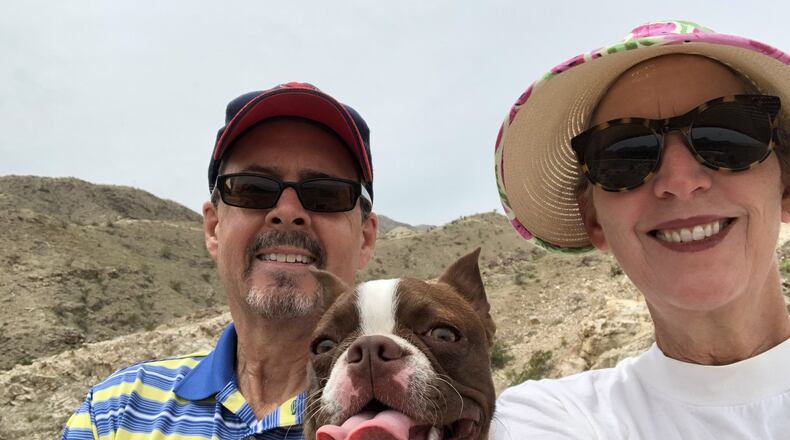The virus crosses from animal to humans in Asia.
Health officials suspect the Chinese government of hiding some of what it knows.
Under the microscope, the killer reveals “a grappling hook for seizing and piercing the walls of the epithelial cells lining the respiratory tract of its hosts.”
Down to the scramble for ventilators and protective masks, the unfolding story of the COVID-19 pandemic “reads just ridiculously like my novel,” said long time Springfield physician Dr. Mary Jo Groves.
That’s except for the one thing she confesses “I got completely wrong” while writing it in Springfield in 2005.
MORE FROM TOM STAFFORD: War against coronavirus has collateral blessings
“What I truly did not have the imagination to see was how much the U.S. response has been bungled.”
Groves, 64, self-published “Virion” in 2014 after being unable to find a publisher for her first novel in a writing market slowed by the financial meltdown.
In an interview from Rancho Mirage, Calif., where she is finishing her career supervising doctors in training through a pandemic, Groves said her writing sprung from fear.
“I was so horrified by the H1N1 (virus) coming out of China, I wanted to wake up the public” so that it would pressure leaders to “prepare for pandemic.”
“I wasn’t the only one concerned,” Groves said. “Enough people had their eyes opened at that time that we could have made it happen.”
Her attempt to make it happen started with the assumption that her target audience would be more interested in a novel than non-fiction work. ”Gone with the Wind” captured the nation’s imagination in a way a non-fiction book about the Civil War could not.
MORE FROM TOM STAFFORD: Protect health care workers so they will be there when we need them
That germ of an idea would have perished, however, had it not been for a window of opportunity.
After graduating in family practice from Wright State University in 1983, Groves had spent 18 years in private practice focused solely on the person across from her in the exam room. But in 2000 she became medical director of the Clark County Jail and a year later took on the same responsibilities at Wittenberg University.
In both jobs, she found herself “managing (the health of) big groups of people, not just one person at a time.”
The jail population was a more local focus. But the nearly 2,000 students at Wittenberg, its faculty and programs that sent both around the world led Groves to dip her toe into the field of epidemiology.
Rising to the 40,000-foot view, her focus shifted to threats to public. That put the post-911 anthrax scare, bird flu and H1N1 on her radar.
Unsolicited, she wrote emails to the Wittenberg administration about potential consequences for students venturing into the global village. Wittenberg’s risk managers took note because Groves’ thoughts were just as important for the other colleges and institutions they served.
MORE FROM TOM STAFFORD: Relieve coronavirus stress by following the advice of the experts
Rising to “a new intellectual challenge,” and with her fingers regularly on the keyboard, her fear about H1N1 grew at the same time she found herself in a rare window of opportunity.
“For the first time in my life,” she said, “I had 17 weeks off a year, all holidays, nights and weekends.”
So, she began writing a story driven by an epidemiologist working in Southeast Asia; a male reporter love interest who covers world health; the bureaucratic machinations of governing bodies; and a world-class scientist ultimately outwitted by his own Shakespearean human foibles and a microscopic strand of eight proteins.
When looking back on why she and others who tried to raise the alarm failed, Groves points to the same foibles: Other pressing issues of the time, the nation’s short attention-span, reduced funding of the Centers for Disease Control, and the eroded status of the public interest in an era of privatization.
“It’s not simply the Trump administration, but … several administrations,” Groves said. For those reasons and others, “it just fell through the cracks.”
In Virion’s chilling quarter-page epilogue, the virus, which has lived on earth far longer than human beings, whispers in the ears of the human beings of today and those who will inhabit the earth with it in generations to come.
You can’t even see me.
But I am here.
Still.
And so are you.
We (both) have survived.
And that is all the more I can say.
About the Author
